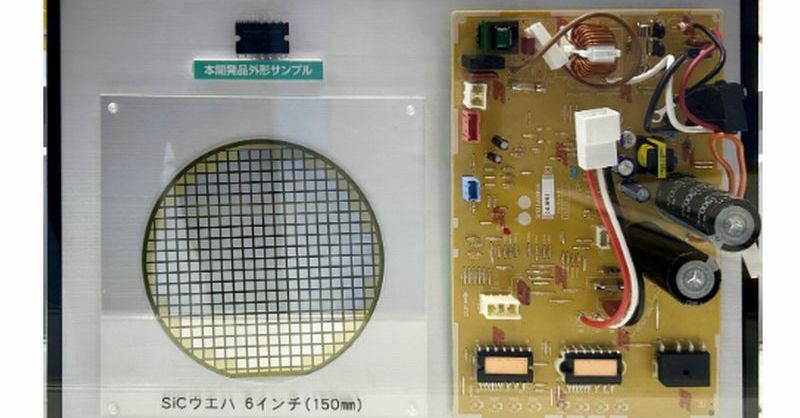Next-Gen SiC IPM: Revolutionizing Energy-Efficient Air Conditioning
The global quest for sustainable solutions is driving innovation across various sectors, and the air conditioning industry is no exception. Traditional air conditioning systems are notorious energy guzzlers, contributing significantly to carbon emissions. However, a groundbreaking technology is poised to change the game: Next-Generation Silicon Carbide Integrated Power Modules (SiC IPMs). These advanced modules promise to dramatically improve the energy efficiency of air conditioning units, leading to substantial environmental and economic benefits.
What are SiC IPMs and How Do They Work?
Silicon Carbide (SiC) is a wide-bandgap semiconductor material offering superior performance compared to traditional silicon (Si) in power electronics. SiC IPMs integrate multiple power components, such as Insulated Gate Bipolar Transistors (IGBTs), diodes, and gate drivers, into a single compact module. This integration reduces losses, improves reliability, and simplifies the design and manufacturing process.
Key Advantages of SiC IPMs in Air Conditioning:
- Higher Efficiency: SiC's superior switching characteristics lead to significantly reduced switching losses, resulting in higher overall efficiency compared to traditional IGBT-based systems. This translates directly to lower energy consumption.
- Smaller Size and Weight: The integrated design of SiC IPMs allows for a more compact and lighter air conditioning system, making them easier to install and transport.
- Improved Reliability: The robust nature of SiC and the integrated design contribute to a longer lifespan and reduced maintenance requirements.
- Faster Response Time: SiC IPMs enable faster control of the compressor, leading to more precise temperature regulation and improved comfort.
- Reduced Cooling Costs: The dramatic increase in energy efficiency directly translates to lower operating costs for consumers.
The Environmental Impact of SiC IPM-based Air Conditioning
The widespread adoption of SiC IPM technology in air conditioning has the potential to significantly reduce greenhouse gas emissions. By lowering energy consumption, we can lessen our reliance on fossil fuels and mitigate the environmental impact of cooling systems. This is crucial, given the projected growth in air conditioning demand, particularly in developing countries.
Contributing to a Greener Future:
- Reduced Carbon Footprint: Lower energy consumption translates directly to reduced CO2 emissions.
- Improved Air Quality: More efficient systems can contribute to improved air quality by reducing the need for energy production from polluting sources.
- Sustainable Cooling Solutions: SiC IPM technology helps pave the way for a more sustainable future in the HVAC sector.
Market Trends and Future Outlook for SiC IPMs in HVAC
The market for SiC IPMs is experiencing rapid growth, driven by increasing demand for energy-efficient solutions and advancements in SiC manufacturing technology. Major manufacturers are investing heavily in R&D to further improve the performance and cost-effectiveness of SiC IPMs for various applications, including air conditioning. We can expect to see wider adoption of this technology in the coming years, leading to a greener and more efficient cooling landscape.
Key Market Drivers:
- Stringent Energy Efficiency Regulations: Governments worldwide are increasingly implementing stringent regulations to promote energy efficiency in appliances, driving the adoption of advanced technologies like SiC IPMs.
- Growing Environmental Awareness: Consumers are becoming more environmentally conscious, demanding energy-efficient products to reduce their carbon footprint.
- Technological Advancements: Continuous advancements in SiC manufacturing technology are leading to lower costs and improved performance, making SiC IPMs more attractive for mass adoption.
Conclusion: A Cool Solution for a Hot Planet
Next-generation SiC IPMs are not just an incremental improvement; they represent a paradigm shift in air conditioning technology. Their superior efficiency, reliability, and environmental benefits make them a compelling solution for a sustainable future. As the technology matures and becomes more cost-effective, we can expect to see widespread adoption, significantly impacting both energy consumption and environmental sustainability. This is a technology to watch closely as it continues to reshape the air conditioning landscape.
Call to Action: Learn more about the latest advancements in energy-efficient air conditioning and the role of SiC IPMs by visiting [link to a relevant industry resource or research paper].
